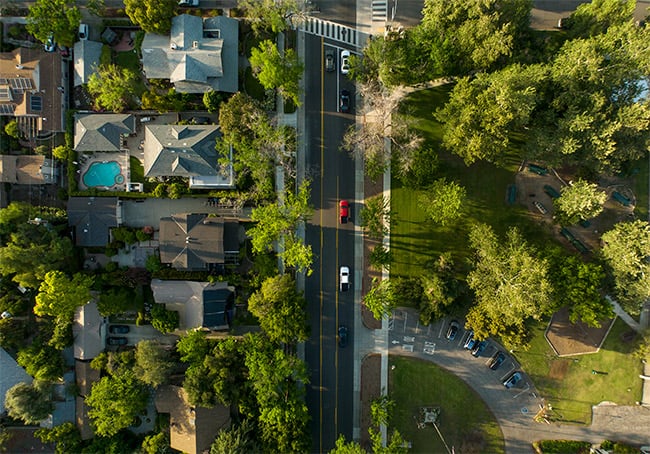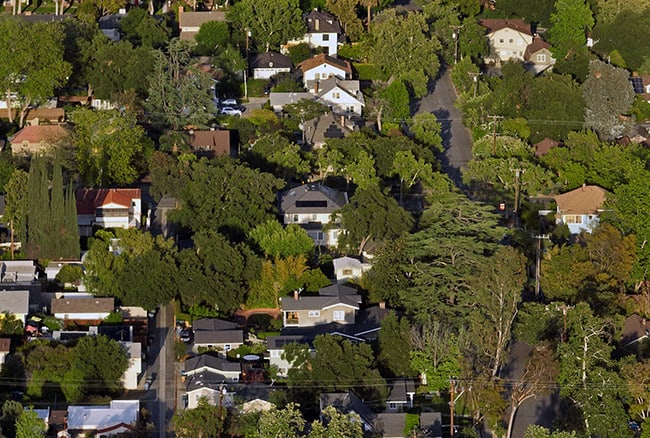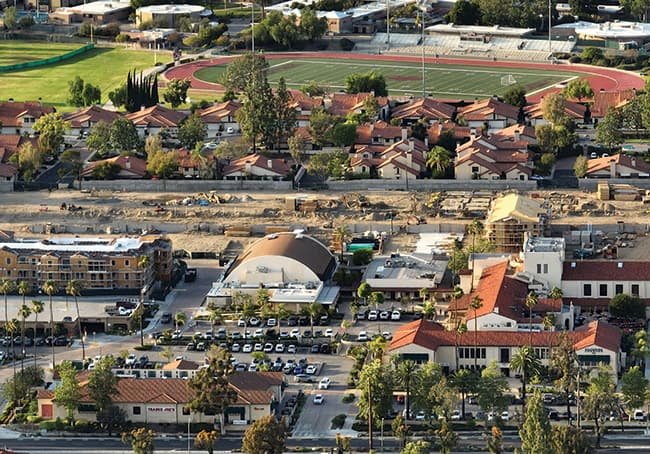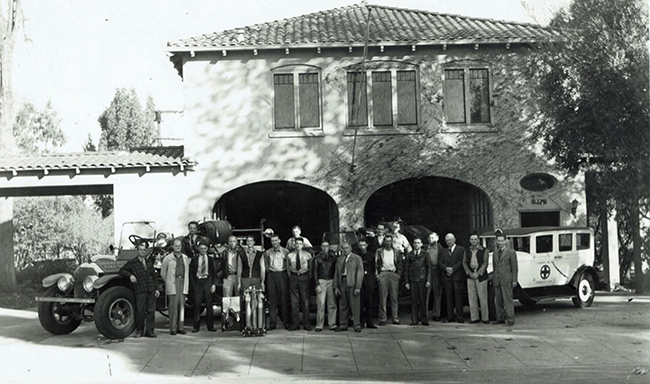Low inventory plus all-cash buyers keep real estate market hot

by Steven Felschundneff | steven@claremont-courier.com
The local housing market may not be as crazy as it was 18 months ago, but that news might surprise anyone actually looking for a place to live in the City of Trees.
According Paul Steffen of Wheeler Steffen Sotheby’s International Realty, last year his office might have seen 30 offers on a well-priced home — now it’s more like six to eight, but of those offers, are all solid.
Make no mistake, it is still very much a seller’s market with historically low inventory and plentiful qualified buyers, resulting in homes selling in a matter of days, boosting already inflated prices for both the purchase and rental markets.
A year ago, mortgage interest rates were at all-time lows, which just further juiced the feeding frenzy. At the time the conventional reasoning held that when interest rates rise, the market should cool, but that simply has yet to materialize.
“The idea that interest rates coming up to 5% would slow the market didn’t happen. Demand is still there and quite honestly, people are still coming in with all-cash deals, so the interest rate isn’t slowing them down,” Steffen said. “There is still pent-up demand for housing, and there is a lack of housing, in particular in Claremont.”
The result? The median home price in Claremont is $900,000 — up 15% year-over-year for the first quarter of 2022.
If one casually looks at the current stock of homes for sale, it appears that $1 million is what it realistically costs to buy in Claremont, particularly for single family homes.
According to a popular online platform that provides public access to the Multiple Listing Service, on April 23 there were 25 homes for sale in Claremont, 12 of which were over than $1 million. Of the 13 under $1 million, two were condominiums, and two were single family homes with the added expense of a homeowner’s association. Just three single family houses were listed under $900,000, all in the $750,000 price range, one of which was a short sale.
Nationally, prices increased 20% from a year ago, but the rapid price gains of the last few years are expected to slow to just 5% over the next 12 months, according to real estate data clearinghouse CoreLogic.
The median priced home in the Southern California region set records in 12 of the past 14 months, rising nearly 17% since March of 2021 to $735,000, according to CoreLogic data released last week. Los Angeles County’s median price rose 12.0% to $840,000, but the county recorded fewer sales, just 7,531, representing a 5.5% drop.
“New listings have not kept up with the large number of families looking to buy, leading to homes selling quickly and often above list price,” said Frank Nothaft, chief economist at CoreLogic. “This imbalance between an insufficient number of owners looking to sell relative to buyers searching for a home has led to the record appreciation of the past 12 months. Higher prices and mortgage rates erode buyer affordability and should dampen demand in coming months, leading to the moderation in price growth in our forecast.”
Those forecasts seem like a distant dream here in Claremont, where on average, homes stayed on the market just 18 days and typically sold for $50,000 to $150,000 over asking price.
At the beginning of the pandemic, many people left congested urban areas in favor of the suburbs where they could have a yard and room to stretch out. That trend continues and with the astronomical real estate prices in many Southern California ZIP codes, plenty of potential buyers are bringing a bundle of cash. Moving to Claremont from the west side of Los Angeles makes our city still look like a bargain.
“I keep sitting in my sales meetings thinking I know pricing, but I am left with my mouth open as we sell stuff,” Steffen said of the ever increasing prices of homes.
The super competitive market is pushing out some would-be home buyers who qualify for a conventional loan with a 20% down payment, but have to compete with others who offer all cash or can make substantial down payments of 50% or more.
“You still see them [borrowers with 20% down] but they aren’t prevalent like they used to be, which is kind of a hindrance to first-time home buyers because that is all they can qualify for,” Steffen said.
In conjunction with home prices, rents in Southern California have skyrocketed recently with CoreLogic reporting February’s median rent on a single family home at $3,342 per month in the Los Angeles, Long Beach and Glendale region, up 10% from last year.
Renters may be fleeing urban areas as well. According to data collected by the Washington Post, rent has increased just 6.7% since 2019 in Los Angeles County, but over the same period of time, rents jumped 23.4% in San Bernardino County and 21.9% in Riverside County.
“Single-family rents rose at more than three times the rate from a year earlier and more than four times the pre-pandemic rate,” said Molly Boesel, principal economist at CoreLogic. “Strong employment and low supply have pushed single-family rental vacancy rates to low levels and have contributed to the high growth in rents.”
In Claremont there are simply too few places to rent due to a lack of apartment construction over the past few decades and a dearth of mom-and-pop landlords, which has really put a squeeze on the rental market.
Steffen said years ago many Claremont residents owned a couple of rentals in addition to their primary residence. But as those people have died, their children have chosen not to be landlords, and have sold the houses to people who have for the most part chosen to live in the homes.
So what is the solution? Steffen hopes to see more high-density housing, including multi-story buildings with many single story flats that residents could access by an elevator. He pointed out that many younger homebuyers are not fixated on mansion-like single family homes, and many would prefer the flexibility of a smaller unit that is walkable to restaurants, transportation and the Colleges. These units would also be popular with older residents seeking to downsize.
Which brings up South Village, which is currently going through the commission process, but initial designs include many units like Steffen describes. His only complaint so far is the lack of units offered for sale.
“Much of [South Village] will be on the rental market, which I think is unfortunate. I actually think there is a demand for people to get some equity in their home and this is a chance to build that equity. And at least be in the housing market where they can enjoy appreciation and leverage up from there.”
One thing he is not a fan of is all the laws coming from Sacramento regulating what gets built and where.
“I think they are trying to legislate a solution to the lack of housing and they have almost made it so no one wants to build the type of housing they are trying to legislate in,” Steffen said, citing AB 1482 which limits rent increases, among other regulations.
“Would you want to own an apartment building where your costs of repairs could go through the roof and you still have to maintain [the building], but you can’t adjust the rent? People might say the [Consumer Price Index] protects you, but the truth is construction costs aren’t tied to CPI very well,” he said. “It’s a much more difficult world for landlords and it’s not an attractive investment for a lot of people anymore.”












0 Comments